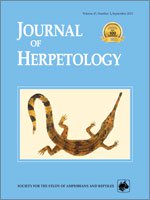As in other savanna biomes, burns are common in the Cerrado biodiversity hotspot, profoundly affecting its entire biota. We review the direct and indirect effects of fire on lizards and find that previous studies on herpetofauna report little or no direct postfire mortality, likely as a result of adaptive behaviors, and that studies on indirect effects of burns often assume the absence of direct effects on the herpetofauna. We investigate the immediate effects of prescribed fires upon lizard mortality in three South American Cerrado physiognomies. We also investigate the short-term (12 months) effects of fire on lizard captures in cerrado sensu stricto, the most widespread Cerrado physiognomy. We found no immediate postfire mortality with lizards using burrows and termite nests as prime shelters. Most lizard species displayed narrowed microhabitat use and reduced activity immediately after the fire. Twelve months after the burn, the capture rate of most species increased or remained the same as before the fire, whereas Mabuya nigropunctata (Scincidae) displayed reduced capture rates. With no apparent mortality caused directly by fire, we attribute variation in capture rates to changes in habitat structure. These changes may represent increased food resources or amelioration of microclimatic and structural conditions to the benefit of the majority of lizard species but which can also be detrimental to some species. Our results indicate that lizards are adapted in many ways to fires in the Cerrado.
How to translate text using browser tools
1 September 2013
Direct and Short-Term Effects of Fire on Lizard Assemblages from a Neotropical Savanna Hotspot
Bernardo Miglio Costa,
Davi Lima Pantoja,
Mariana Caixeta Milhome Vianna,
Guarino Rinaldi Colli
ACCESS THE FULL ARTICLE

Journal of Herpetology
Vol. 47 • No. 3
September 2013
Vol. 47 • No. 3
September 2013




